Rhodes
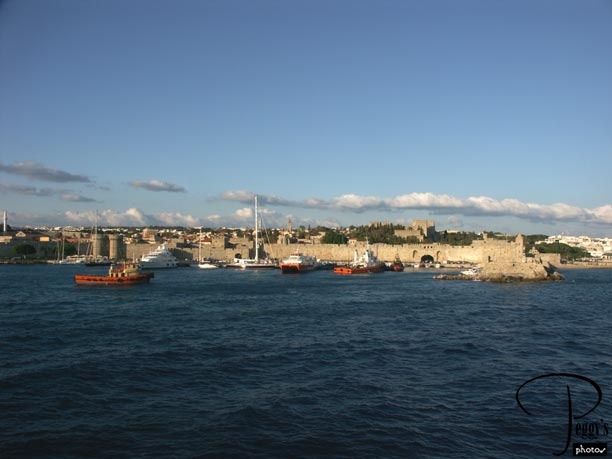
We arrived early in the morning at the Greek island of Rhodes, one of the Dodecanese Islands. What a beautiful scene awaited us: the breathtaking medieval fortifications along the harbor.

Rhodes
Rhodes
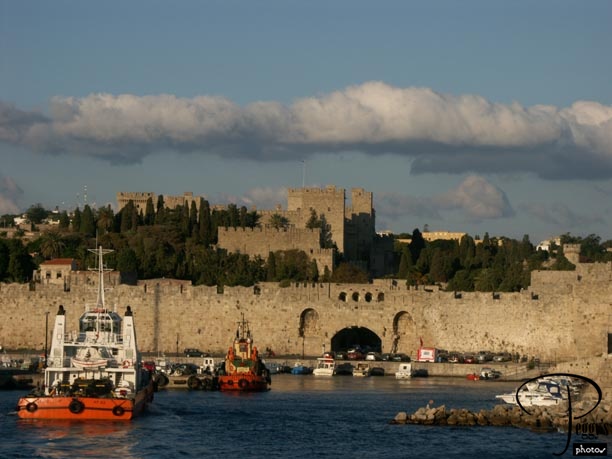
In the photo, you can see the Palace of the Grand Master. The old medieval town of Rhodes was built by the Knights of Rhodes between 1308 and 1522, when they were the rulers of the independent state of Rhodes.

Rhodes
Rhodes
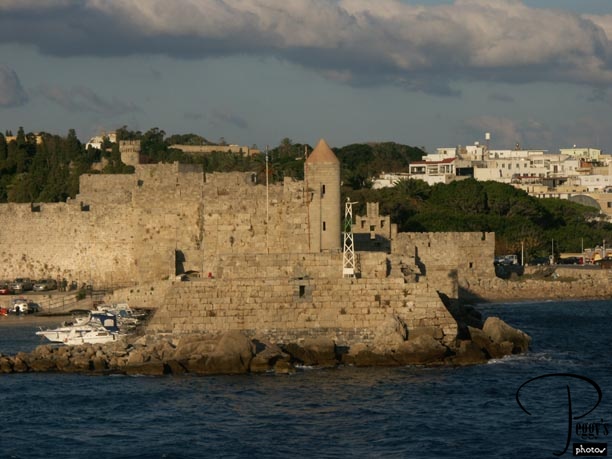
More of the fortifications. The Knights of Rhodes began as a Benedictine nursing order, known as the Knights Hospitaller or the Order of St. John of Jerusalem, which was founded in Jerusalem about 1100 following the First Crusade. Soon afterward, they also became a military order and they were responsible for the care and defense of pilgrims to the Holy Land. Following the loss of Christian territory to the Muslims, they first moved their order to the island of Cyprus. They soon moved from there to the island of Rhodes and became known as the Knights of Rhodes.

Rhodes
Rhodes
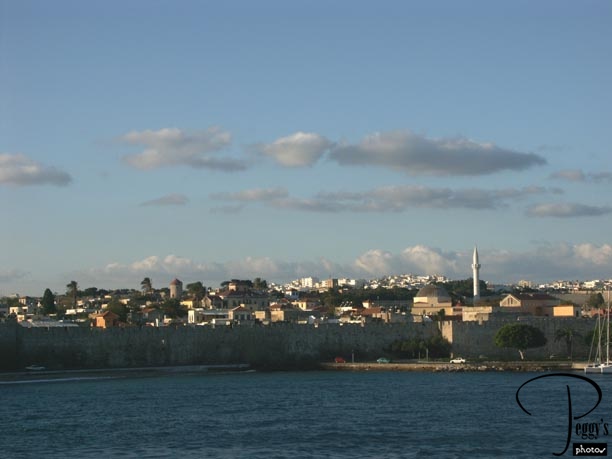
More of the waterfront.

Rhodes
Rhodes
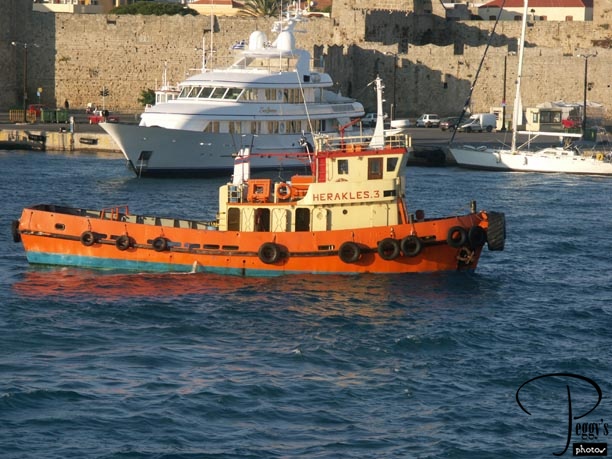
The very colorful “Herakles 3” in the harbor.

Rhodes
Rhodes
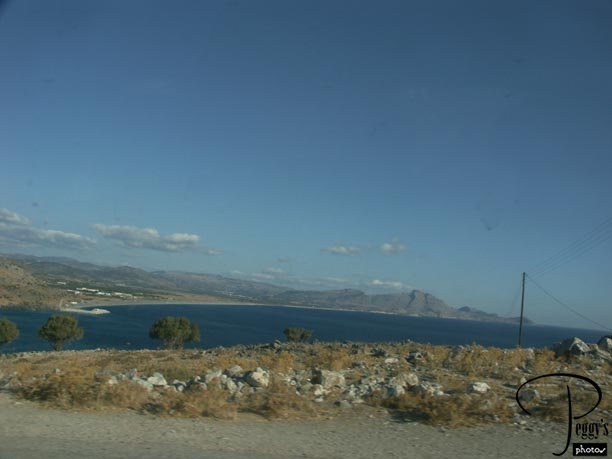
I took a combined Rhodes and Lindos optional tour––42 euros. Photo taken on the drive to Lindos.

Rhodes
Rhodes
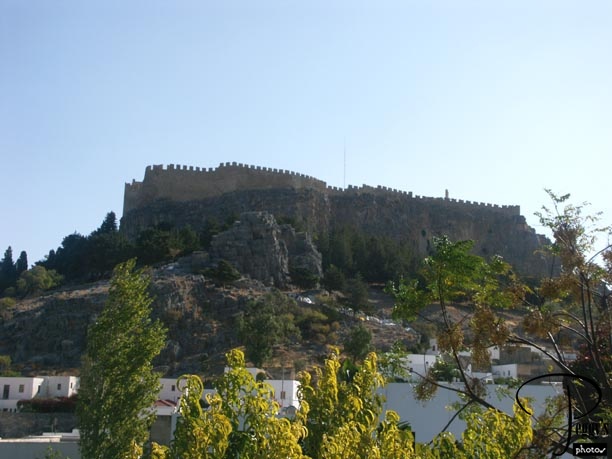
The Ancient Acropolis taken from the town of Lindos. The fortifications surrounding the Acropolis were built by the Knights of Rhodes.

Rhodes
Rhodes
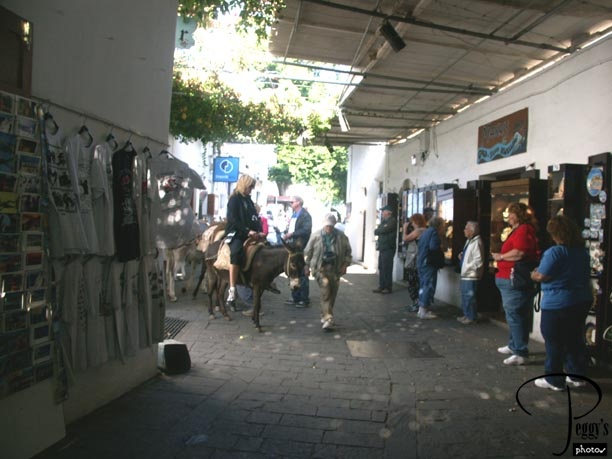
It is a very steep climb up to the Acropolis. Some of our group were smart enough to take the donkeys up the hill––I wasn’t; I walked up it. That is Bob in the photo. He walked up behind the donkeys––he didn’t know that most of our group were following our local guide up the hill using mainly a different path. I mention this as Bob figures in my adventure at Lindos later on.

Rhodes
Rhodes
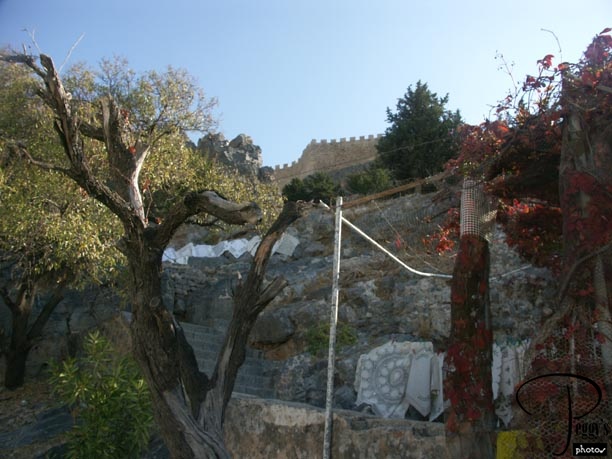
Walking up the many, many stairs to the top of the hill.

Rhodes
Rhodes
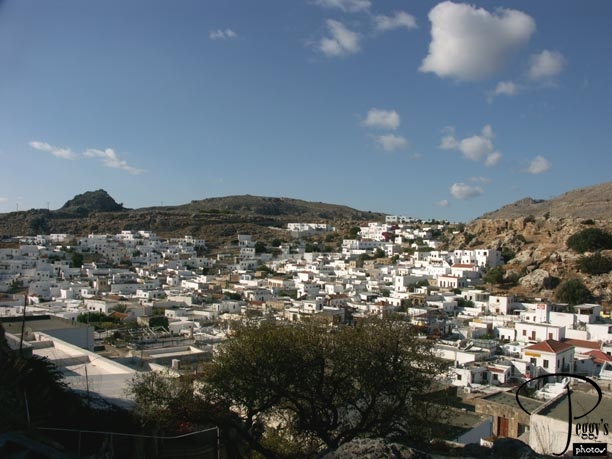
View of the town of Lindos; photo taken from the steps.

Rhodes
Rhodes
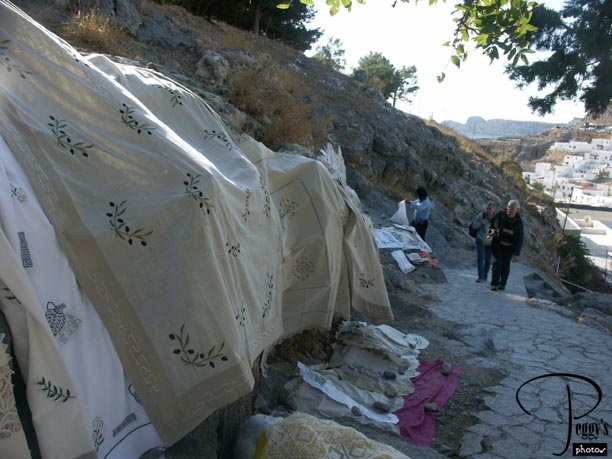
But I was glad that I did take the walk up the hill as I wouldn’t have been able to take this photo of the embroidery laid on the rocks.

Rhodes
Rhodes
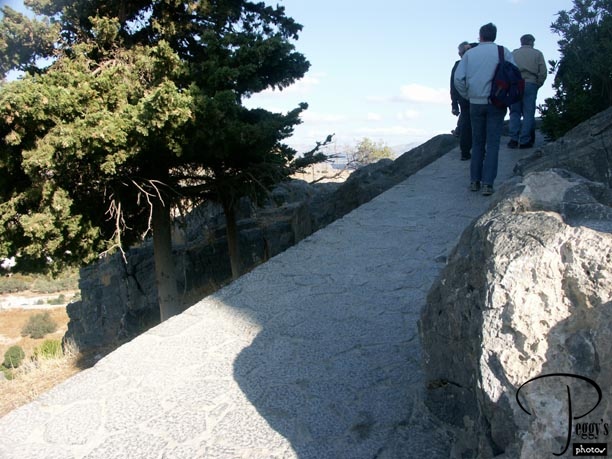
So far the walk up was okay for me as I could hold onto the rocks on the side of the path. But then we came to a section without anything to hold onto and I became a bit nervous as I do not do well with heights.

Rhodes
Rhodes
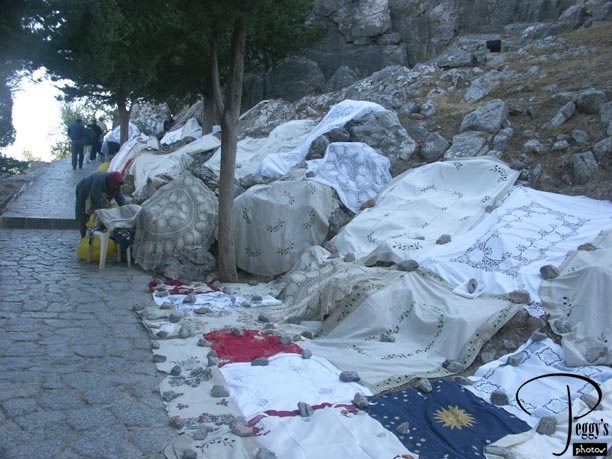
But then there was another good photo of this woman laying out her wares on the rocks. She had to place small rocks on them as it was windy here.

Rhodes
Rhodes
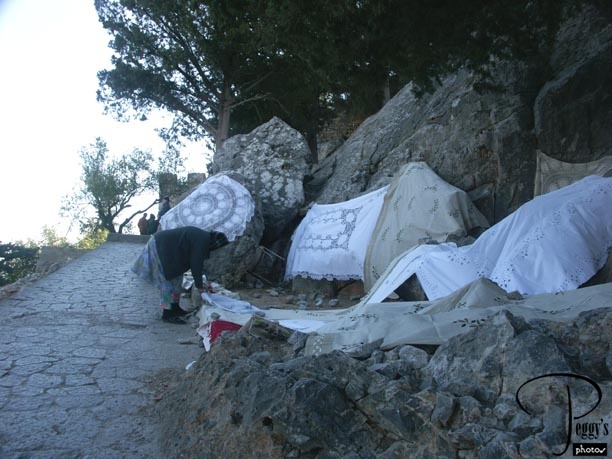
Another view.

Rhodes
Rhodes
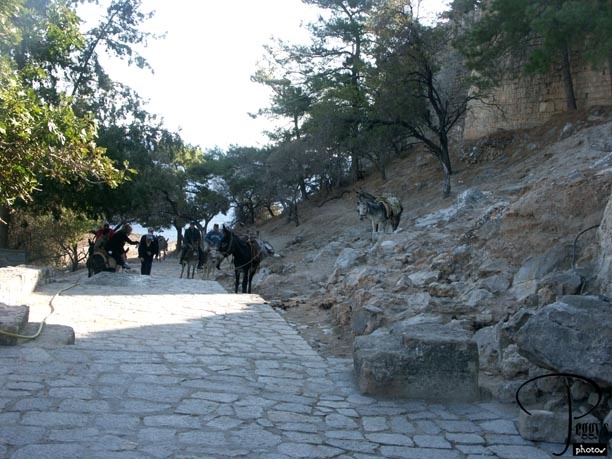
Donkeys arriving with some of our tour group. This is where they were let off.

Rhodes
Rhodes
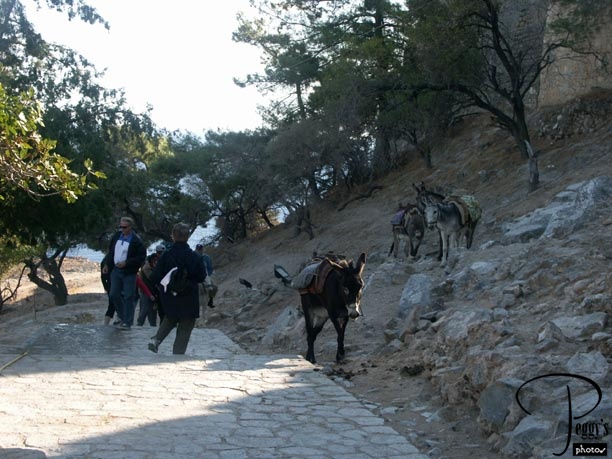
Four donkeys resting after their climb up.

Rhodes
Rhodes
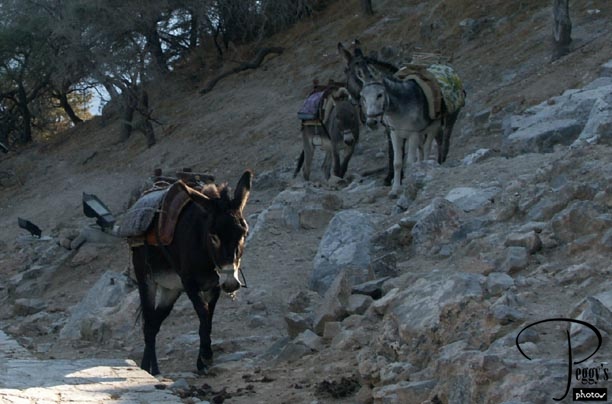
Closer–up view of the donkeys.

Rhodes
Rhodes
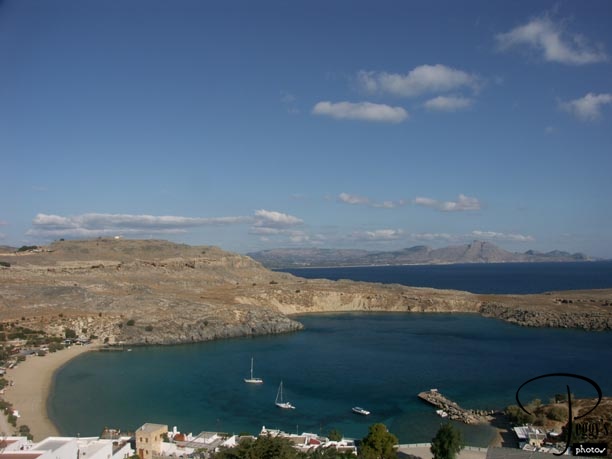
View from the top of the hill. This is St. John’s Bay, where St. John the Apostle landed in 43 A.D., bringing Christianity to Rhodes.

Rhodes
Rhodes
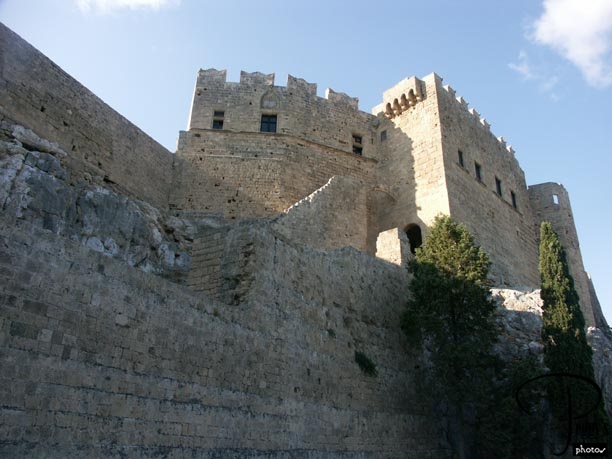
The walls of the Acropolis.

Rhodes
Rhodes

Relief of a trireme, a three–banked ship, at the bottom of the steps up to the Acropolis, 2nd century B.C.

Rhodes
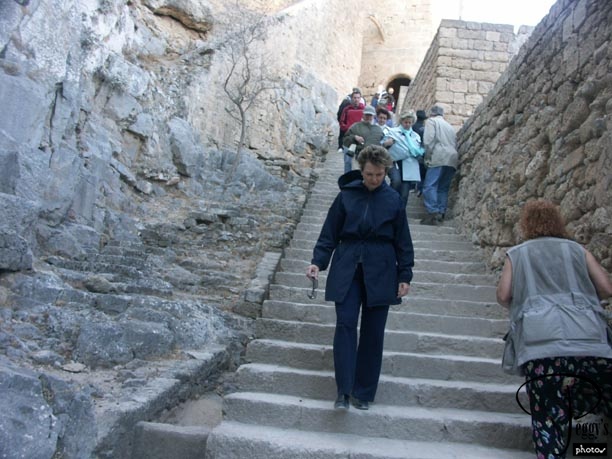
Old medieval stairs up to the Acropolis. Eleanor and I started climbing up the steep stairs, carefully. We could use the wall on the right to hold onto. Then, all of sudden, the wall was no longer close enough to the stairs to use. There were about 20 risky stairs left to climb. Eleanor turned back. I almost did, but something very odd came over me. I decided that somehow I was going to make it up these stairs (I have always been very afraid that someday I am going to slip on a flight of old steep steps and I was very nervous). My e–mail friend Margaret, from New Zealand, had been to Lindos and had sent me some photos she had taken from the top of the Acropolis. I also wanted to take some photos up there, and if Margaret had made it up these steps, then I was also going to. But how was I going to accomplish this? I figured that I would use the same maneuvers that I did on the steps alongside the funicular on Likavitos Hill in Athens––that is, bend over and balance myself on the steps with my right hand. It worked. I made it to the top of the steps––and received a loud cheer from a group of people watching me making an spectacle of myself. And in all fairness to Eleanor, many of the people on our tour didn’t even try to make it up the steps.

Rhodes
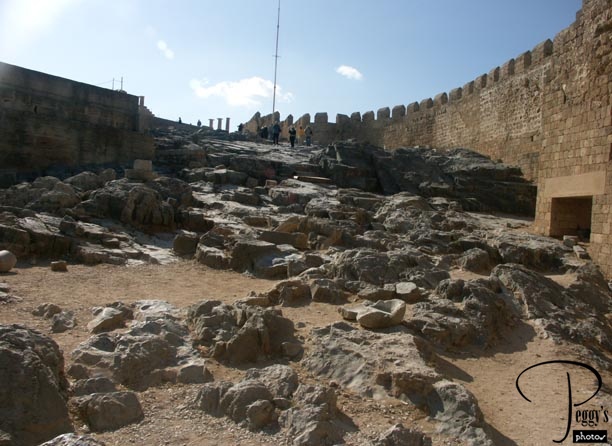
I quickly got my self–esteem back as that crowd was already on their way down the steps. Now, I had to make my own pathway up these rocks to reach the ruins.

Rhodes
Rhodes
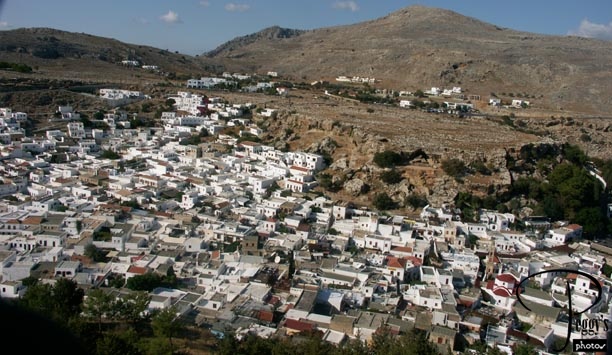
A view of the town of Lindos from the top of the Ancient Acropolis.

Rhodes
Rhodes
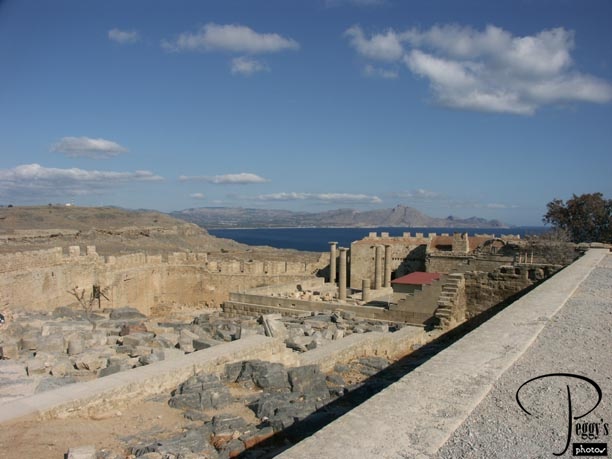
The Sanctuary of Athena Lindia.

Rhodes
Rhodes
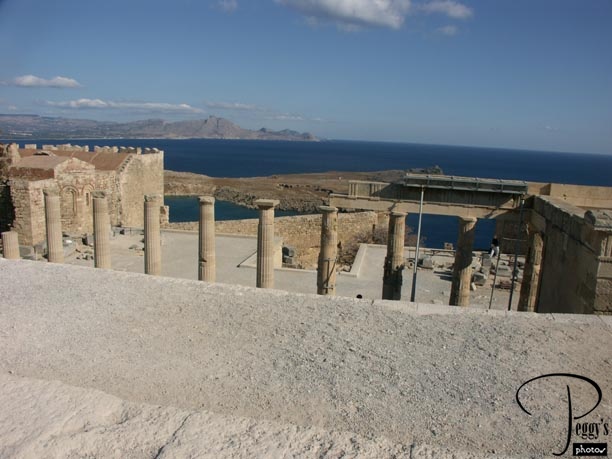
On the left, the Agios Ioannis, the 13th century Church of St. John. On the right, the Doric stoa.

Rhodes
Rhodes
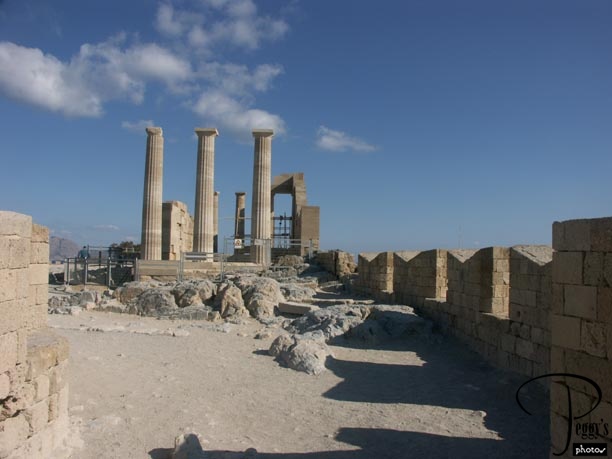
The Doric Temple of Athena Lindia, 4th century B.C.

Rhodes
Rhodes
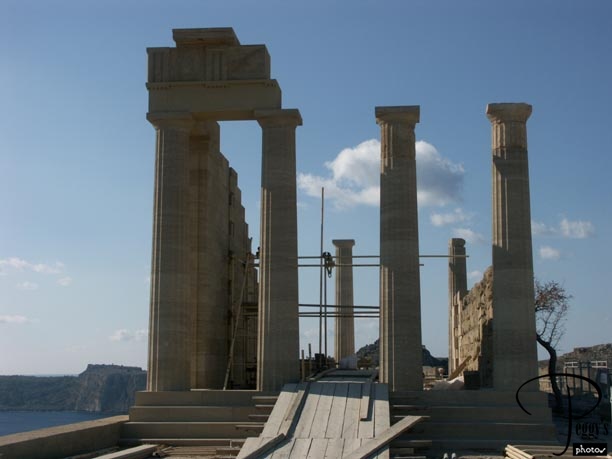
Another view of the Temple of Athena Lindia.

Rhodes
Rhodes
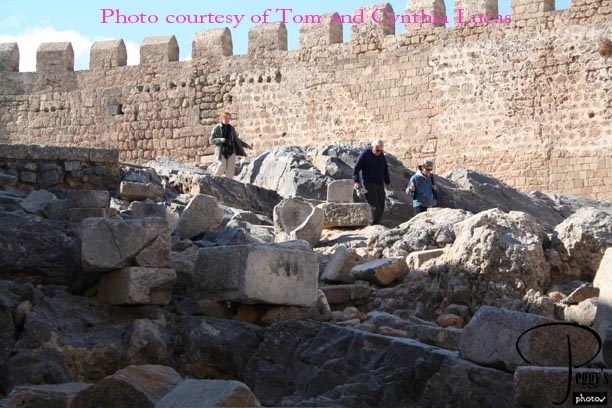
It was already time to leave the Acropolis to be able to make it back to the bus in time. But, first, a climb down the rocks. There I am––photo taken by Tom and Cindy Lucas. The couple in front of me are Ginny and Paul, fellow members of my Trafalgar group.

Rhodes
Rhodes
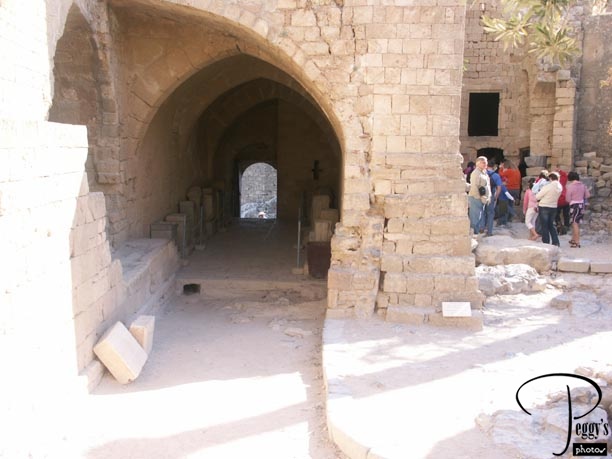
One thing I forgot to think about on my way up the steps was how was I to get down them. The exit to the steps is through that hole where the man’s head is.

Rhodes
Rhodes
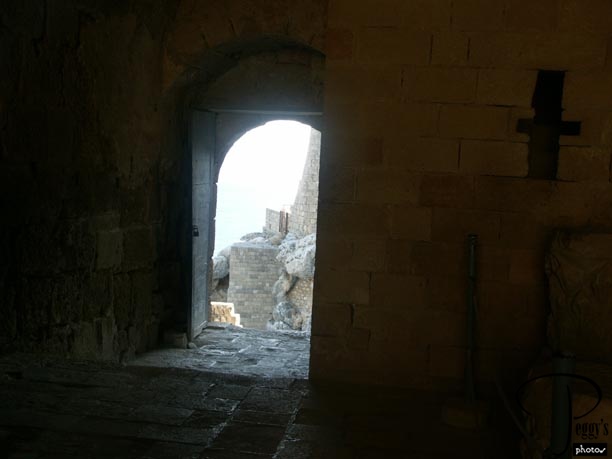
Closer to the hole and much more nervous.

Rhodes
Rhodes
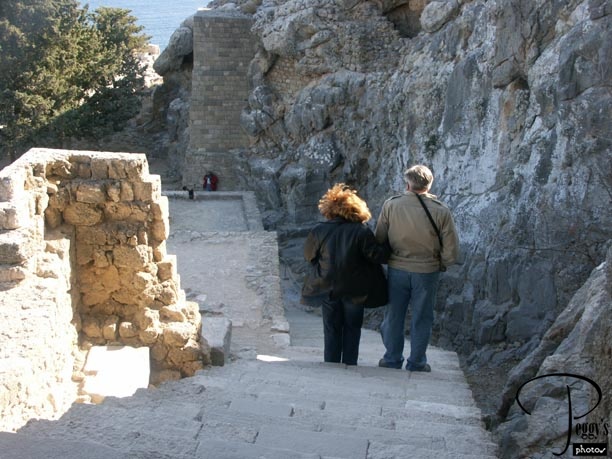
Almost on the steps. You can see in the photo where the wall on the left is not attached to the steps. Only one way down––I sat down and just went from one step to the next on my rear end. When I finally made it to the wall where I could balance myself, one of the men of our tour group asked me if I would like some help and he stood me up and led me down the steps holding my hand. That was the easy way down. I wrote to Margaret of my adventure and found out that I am not the only one who has gone down steps on their rear end.

Rhodes
Rhodes
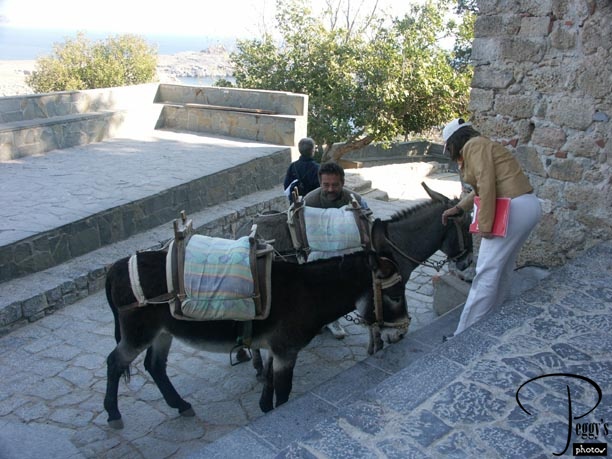
Now, to get down the hill. I was not looking forward to walking down the side of the clift. The only tour member left up on top was Bob. He was about to walk down the donkey trail, the way he walked up and I thought that I would walk with him that way. But Bob insisted that I should take a donkey down and he would walk behind the donkey. He convinced me and I got on a donkey. But the donkey driver told him that two donkeys had to be used to go down and he had to go on the other donkey. Bob was not pleased as it would not be a thrill ride for him as, he kept telling me, he grew up on a farm and had ridden on many animals before. I had only been on a horse one time, so this was a real thrill ride for me––who needs Disneyland? This is where we got on the donkeys. I took this photo beforehand. That is Sabrina in the photo.

Rhodes
Rhodes
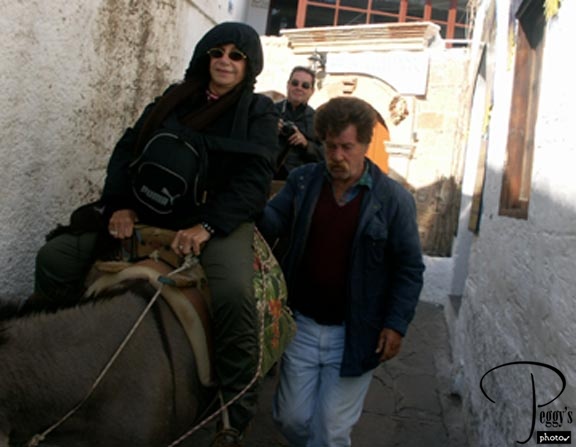
Donkeys coming up––close quarters. The donkeys followed a winding trail down another side of the clift and then took the steps down. Ever rode a donkey down steps?

Rhodes
Rhodes
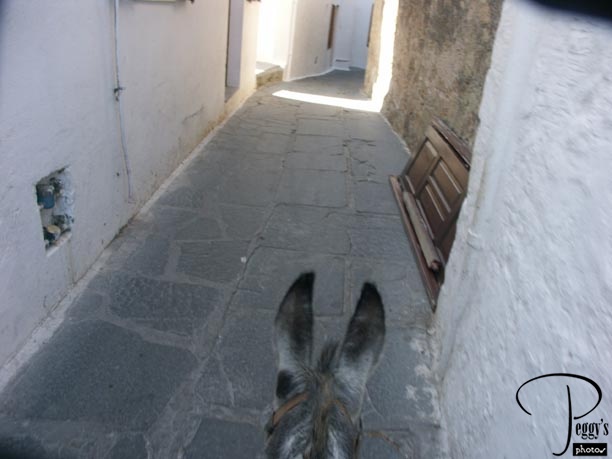
When Bob and I finally made it down to the town of Lindos, our tour group was already on the way to the bus, so there was no one there to take our photos. But I did get this shot of my donkey’s ears taken on the ride down. The donkey ride down was 5 euros. I thought that my ride was one of the biggest thrills I have ever had so I tipped my donkey driver another 5 euros.

Rhodes
Rhodes
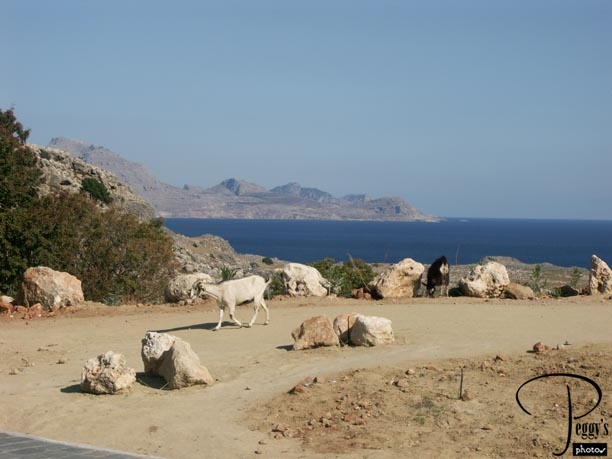
I took so much time getting up to the top of the Acropolis and then back down again that I didn’t have any time to walk around the town of Lindos, which would have been a very interesting walk. Bob and I walked back to the bus. These goats were grazing across the street from where our bus was parked.

Rhodes
Rhodes
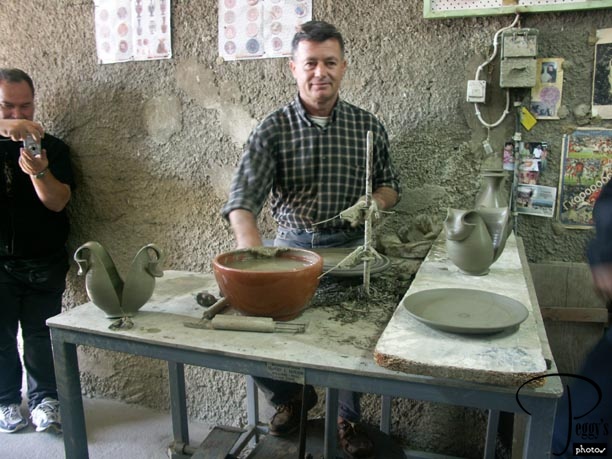
Before returning to the harbor area to tour the old town of Rhodes, we stopped at a pottery factory.

Rhodes
Rhodes
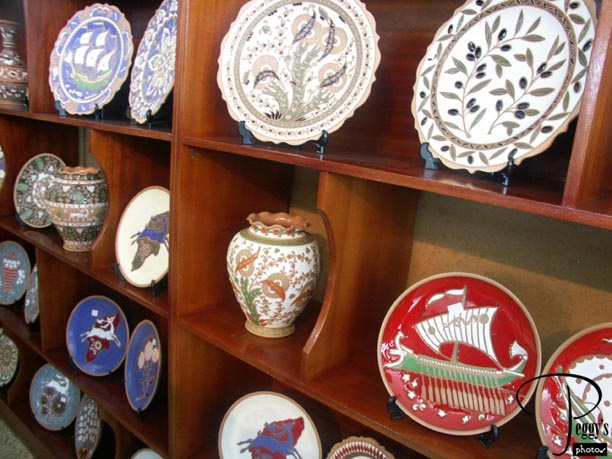
Some of the pottery made at this factory.

Rhodes
Rhodes
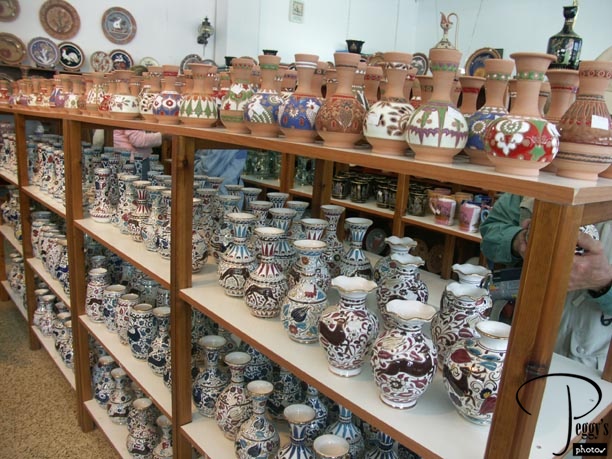
More of the pottery. I wasn’t interested in buying any of the pottery.

Rhodes
The Street of the Knights
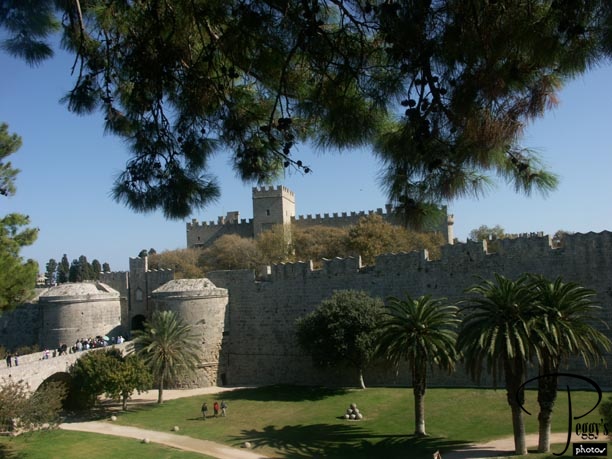
After our visit to the pottery store, we drove to the Old City of Rhodes and walked to the entrance to the Street of the Knights. In this photo, you can see the entrance to the old city and the Palace of the Grand Master.

The Street of the Knights
The Street of the Knights
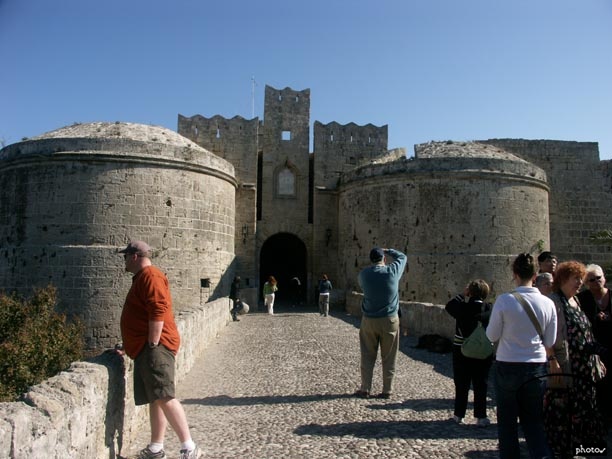
The 16th–century d’Amboise Gate.

The Street of the Knights
The Street of the Knights
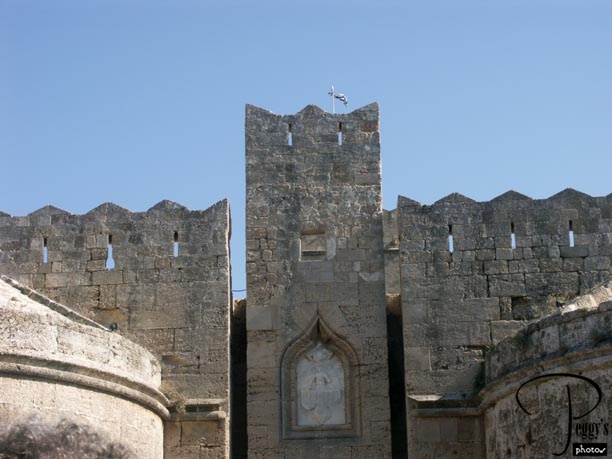
Closer–up view of the d’Amboise Gate.

The Street of the Knights
The Street of the Knights
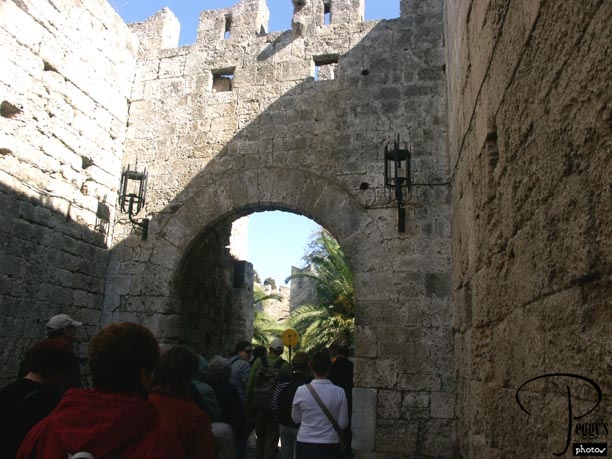
Other side of the gate.

The Street of the Knights
The Street of the Knights
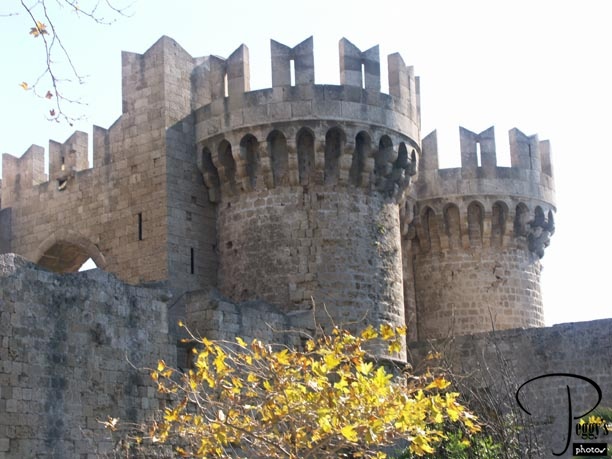
The Palace of the Grand Masters. The heads of the Knights of Rhodes were called the Grand Masters. We only walked past the palace on our tour, not visiting it. I returned later to visit it, but it had already closed. It is believed that the Colossus of Rhodes, a gigantic statue (105–130 feet tall) of Rhodes’ patron god, Helios––the god of the sun, stood where the palace is today. The Colossus of Rhodes, one of the Seven Wonders of the Ancient World, was erected in 305 B.C. and destroyed by an earthquake in 227 B.C.

The Street of the Knights
The Street of the Knights
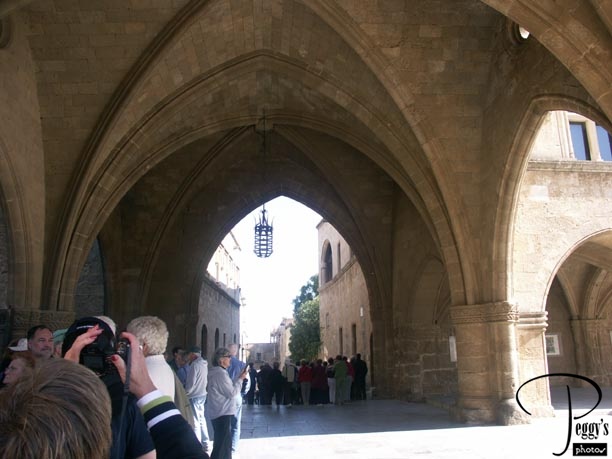
Walking to the Street of the Knights.

The Street of the Knights
The Street of the Knights
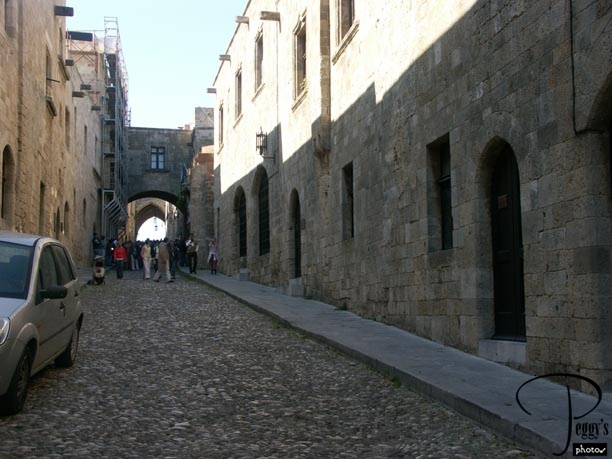
The Street of the Knights, looking backward. The street is lined by the Inns of the Tongues (nationalities) of the Order of St. John. Buildings of the inns started in the 14th century and were used as meeting places for the Knights. The arched bridge in the photo connects the Inn of Spain with the Inn of Provence.

The Street of the Knights
The Street of the Knights
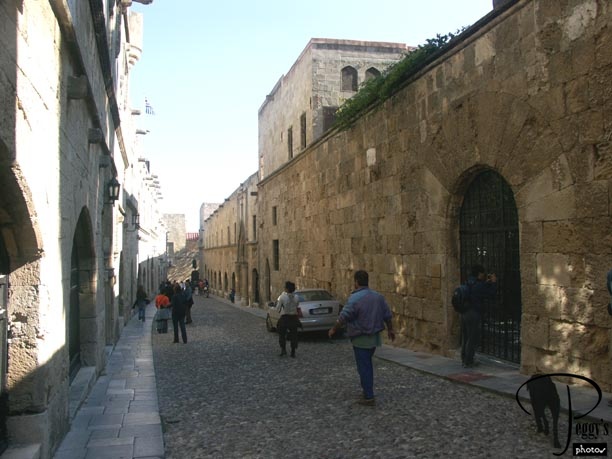
Looking down the Street of the Knights in the other direction.

The Street of the Knights
The Street of the Knights

The coat of arms of the Inn of Provence, which represents the Order of the Knights of St. John, the Royal House of France, the Grand Master del Carretto, and the Knight de Flota.

The Street of the Knights
The Street of the Knights
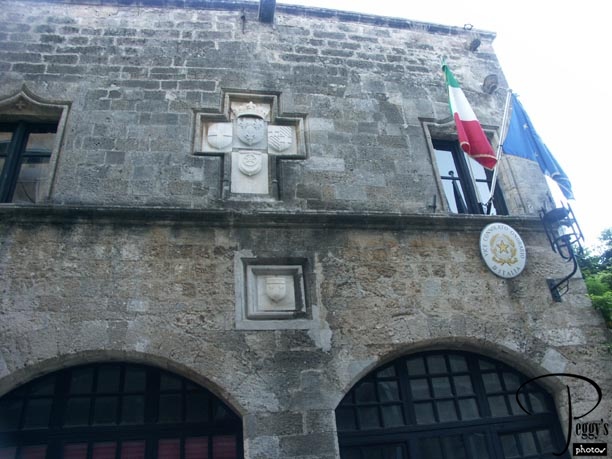
Today, this building houses the Italian Consulate.

The Street of the Knights
The Street of the Knights
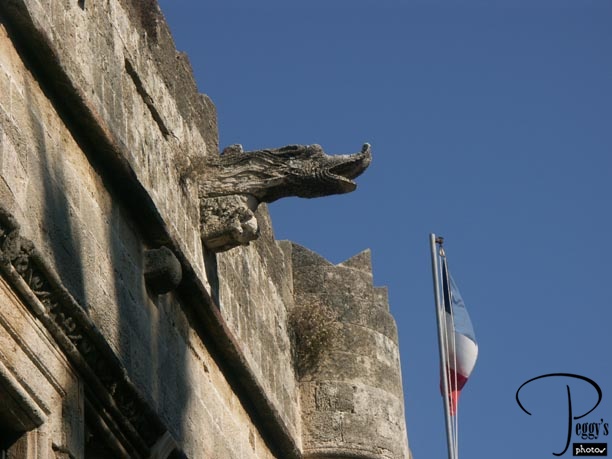
Gargoyle at the French Consulate.

The Street of the Knights
The Street of the Knights
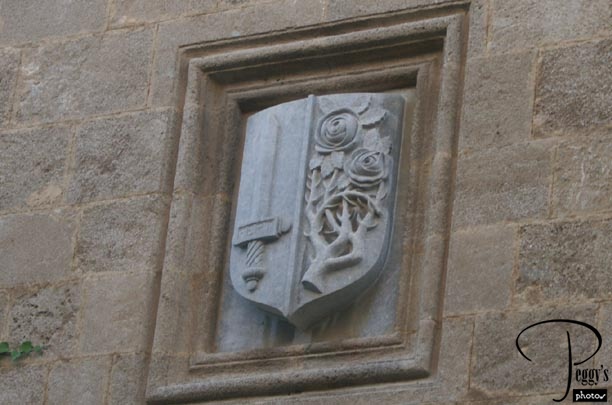
Another coat of arms. There were many of them over the doorways of the buildings and on the sides of the buildings.

The Street of the Knights
The Street of the Knights
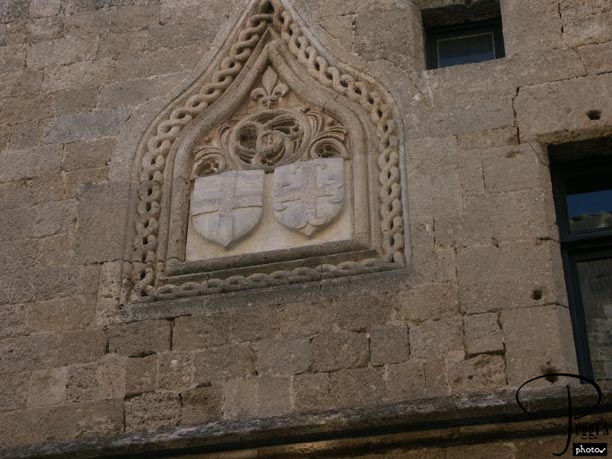
Another coat of arms.

The Street of the Knights
The Street of the Knights
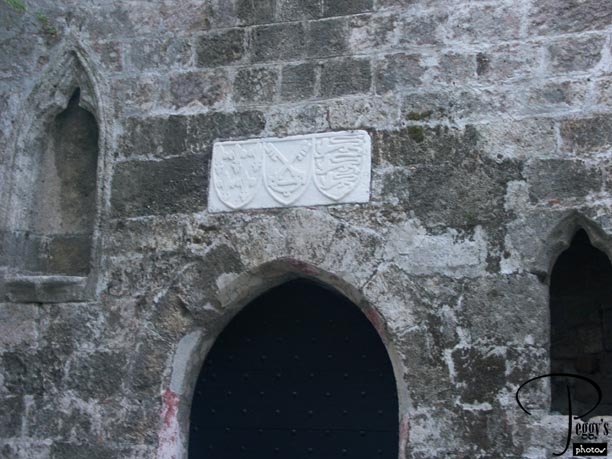
And another one.

The Street of the Knights
The Street of the Knights

Two of the doors on the Street of the Knights.

The Street of the Knights
The Street of the Knights
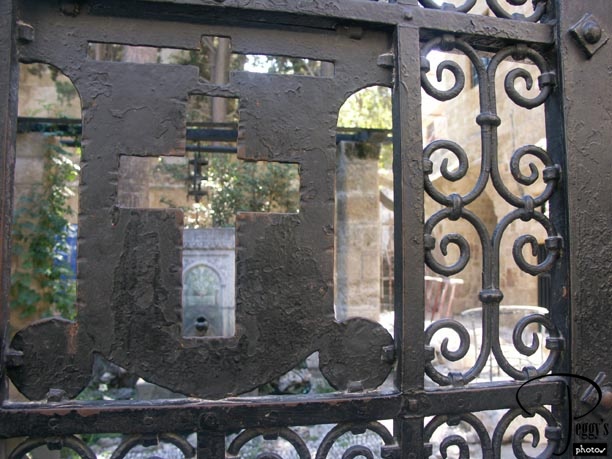
Cross in front of a patio.

The Street of the Knights
The Street of the Knights
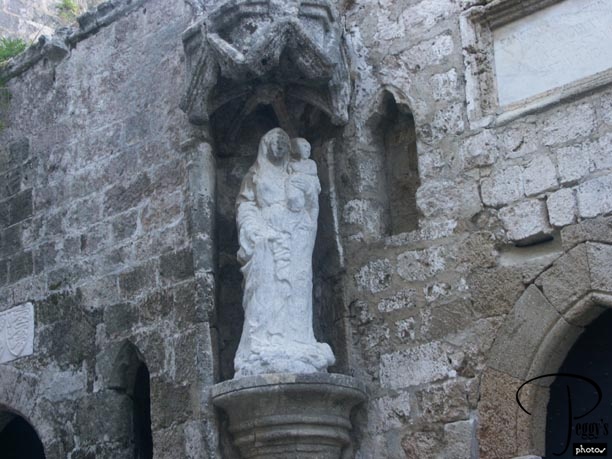
Statue of the Virgin Mary and the Baby Jesus in front of a chapel.

The Street of the Knights
The Street of the Knights
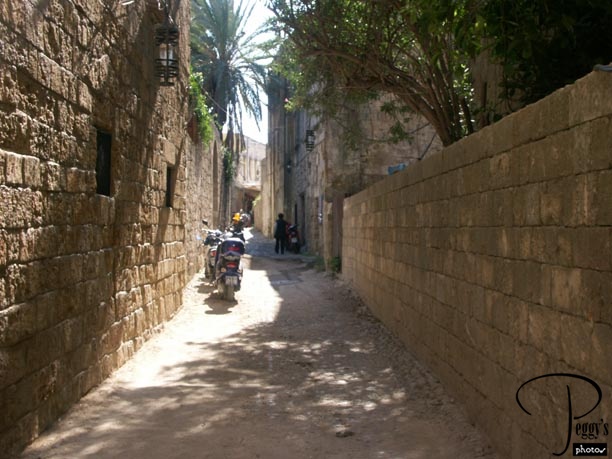
Side street off the Street of the Knights.

The Street of the Knights
The Street of the Knights
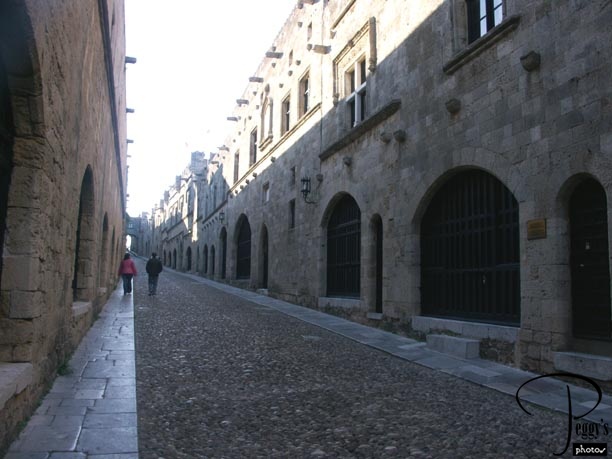
I took these next three photos when I came back here. The street was now empty––all the tour groups had already gone through.

The Street of the Knights
The Street of the Knights
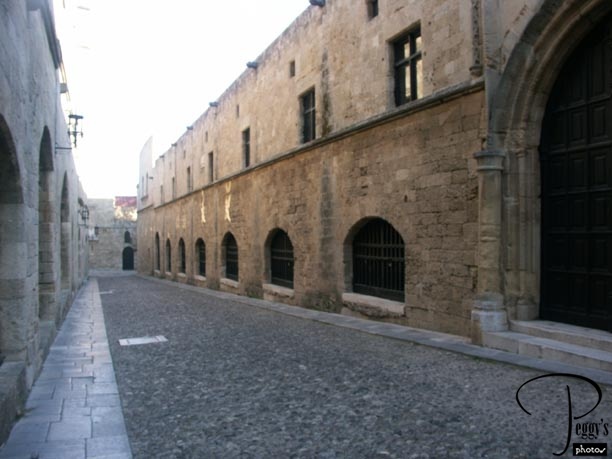
Street of the Knights in the other direction.

The Street of the Knights
The Street of the Knights
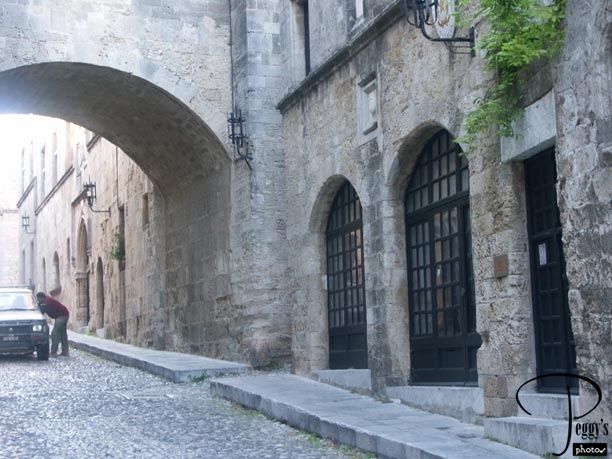
Under the arch.

The Street of the Knights
The Street of the Knights
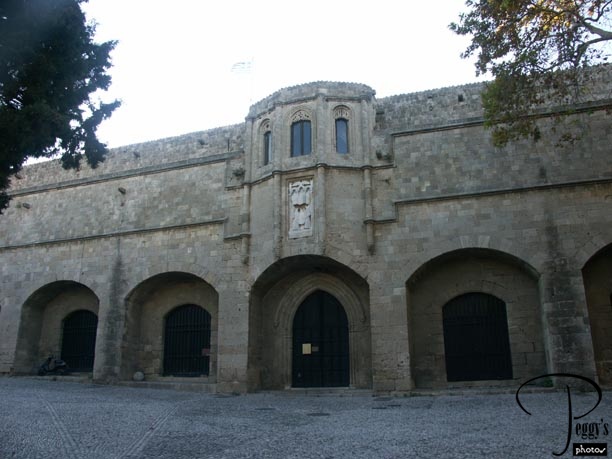
At the end of the Street of the Knights is the Hospital of the Knights, begun in 1440. In 1523, the Ottoman Turks defeated the Knight of Rhodes. The Knights were allowed to leave. They first traveled to the Kingdom of Sicily and then moved from place to place in Europe until they finally settled in Malta and became known as the Knights of Malta. In 1798, Napoleon conquered Malta and the Knights then established themselves in Italy, where they are still headquartered. Today, they are known as The Sovereign Military Hospitaller Order of St. John of Jerusalem of Rhodes and of Malta or also as The Sovereign Military Order of Malta. They are a Catholic lay order and claim to be a soveign entity, which has granted them permanent observer status at the UN. In 1912, Rhodes was occupied by Italy, and in 1948, Rhodes and the other Dodecanese Islands were acceded to Greece.

The Street of the Knights
Rhodes
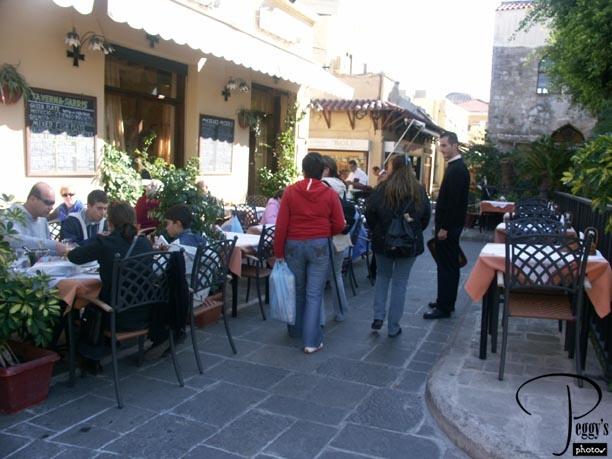
After I walked with the tour group on the Street of the Knights, I decided not to follow them back to the ship for lunch. Rather, I ate lunch at this restaurant in the Old City. I have put the photos that I took while walking around the Old City of Rhodes on a slide show on this site: Go to Slide Shows, Western Europe, Greece, ” Rhodes: Old City.”

Rhodes
Rhodes
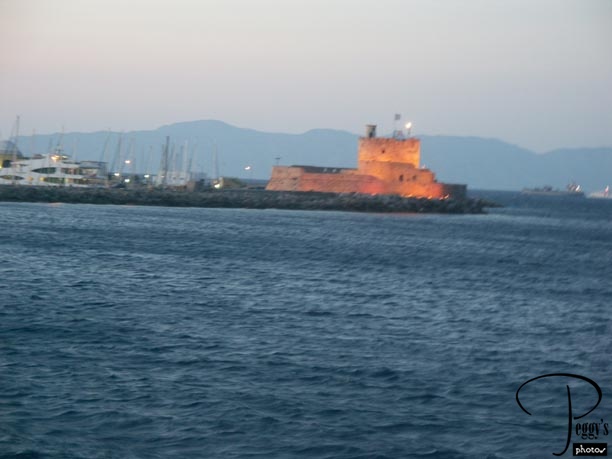
We left Rhodes in the early evening to sail to our last two ports of call: the Greek Islands of Crete and Santorini.
